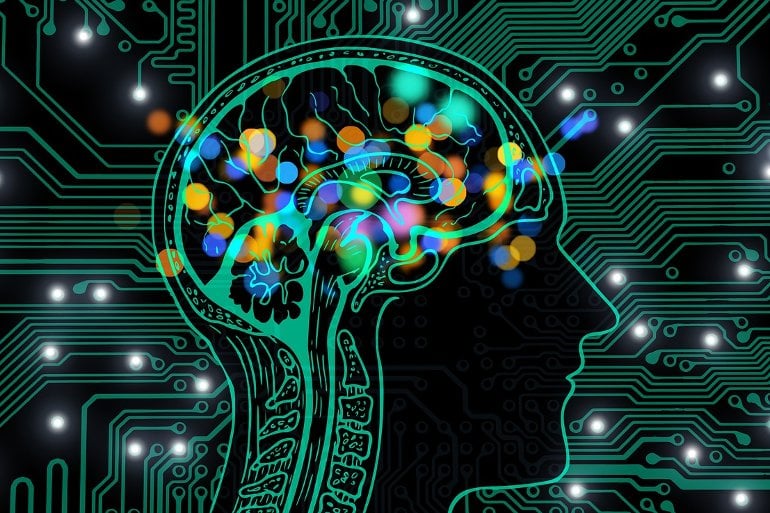Summary: Using whole-brain virtual models, researchers simulate the effects of non-invasive neurostimulation on the aging brain. The computational models shed light on the dynamics of brain changes as a result of aging.
Source: Human Brain Project
Human Brain Project researchers have used whole-brain virtual models to simulate what happens when neurostimulation is applied to aging human brains.
These models provide new insight into how the dynamics of a healthy brain change as it grows old, and crucially, could help identify new targets and strategies for therapeutic neurostimulation.
As the brain ages, it “reorganizes” itself: its neurodynamics and the connections between neurons change dramatically, often resulting in a decrease of cognitive functions. Noninvasive brain stimulation techniques, such as applying electrical or magnetic currents, have recently emerged as possible treatments for neurological and degenerative disorders, contrasting and mitigating the natural effects of aging.
However, large scale experimental studies on healthy human brains have obvious ethical implications. A group of Spanish researchers, led by Gustavo Deco from the Universitat Pompeu Fabra, Barcelona, were able to overcome these limitations with the help of modeling and simulation.
Their study was published in Cerebral Cortex and used neuroimaging data of 620 healthy adults, collected during previous research – half of them aged over 65 years, the other half below 65 years.
The team looked for key differences between the brain states of the two groups, and identified a brain state similar to the so-called “rich club” region, a network of 12 brain hubs well connected with each other.
“We found that older participants had reduced capacity to access a brain state overlapping with the brain’s rich club organization. This state is key for the efficient transmission of information within the brain,” explains Anira Escrichs from Universitat Pompeu Fabra, first author of the study.
“We successfully simulated the brain states detected in the older group in a whole-brain computational model. We then applied artificial stimulations in all brain regions of the model, looking for a way to induce a brain state similar to the one observed in the younger participants.”

The team found that some brain areas were optimal to force the transition from the older to the middle-aged regime – and they identified the precuneus, a prominent region of the rich club, as the best target.
The long-term work of the team in the HPB Flagship was crucial for the creation and investigation of computational models of the human brain supporting transitions between brain states.
In addition to providing new information about how the brain reacts differently to external stimulation depending on age, the study could also lay the groundwork for new therapeutic approaches.
“We believe that these findings could have important implications for designing neurostimulation interventions and reversing the effects of aging on the functionality of the brain,” concludes Escrichs.
About this brain aging research news
Author: Peter Zekert
Source: Human Brain Project
Contact: Peter Zekert – Human Brain Project
Image: The image is in the public domain
Original Research: Closed access.
“The effect of external stimulation on functional networks in the aging healthy human brain” by Gustavo Deco et al. Cerebral Cortex
Abstract
The effect of external stimulation on functional networks in the aging healthy human brain
Understanding the brain changes occurring during aging can provide new insights for developing treatments that alleviate or reverse cognitive decline. Neurostimulation techniques have emerged as potential treatments for brain disorders and to improve cognitive functions.
Nevertheless, given the ethical restrictions of neurostimulation approaches, in silico perturbation protocols based on causal whole-brain models are fundamental to gaining a mechanistic understanding of brain dynamics.
Furthermore, this strategy could serve to identify neurophysiological biomarkers differentiating between age groups through an exhaustive exploration of the global effect of all possible local perturbations.
Here, we used a resting-state fMRI dataset divided into middle-aged (N =310, <65 years) and older adults (N =310, ≥≥65) to characterize brain states in each group as a probabilistic metastable substate (PMS) space.
We showed that the older group exhibited a reduced capability to access a metastable substate that overlaps with the rich club. Then, we fitted the PMS to a whole-brain model and applied in silico stimulations in each node to force transitions from the brain states of the older- to the middle-aged group.
We found that the precuneus was the best stimulation target.
Overall, these findings could have important implications for designing neurostimulation interventions for reversing the effects of aging on whole-brain dynamics.







